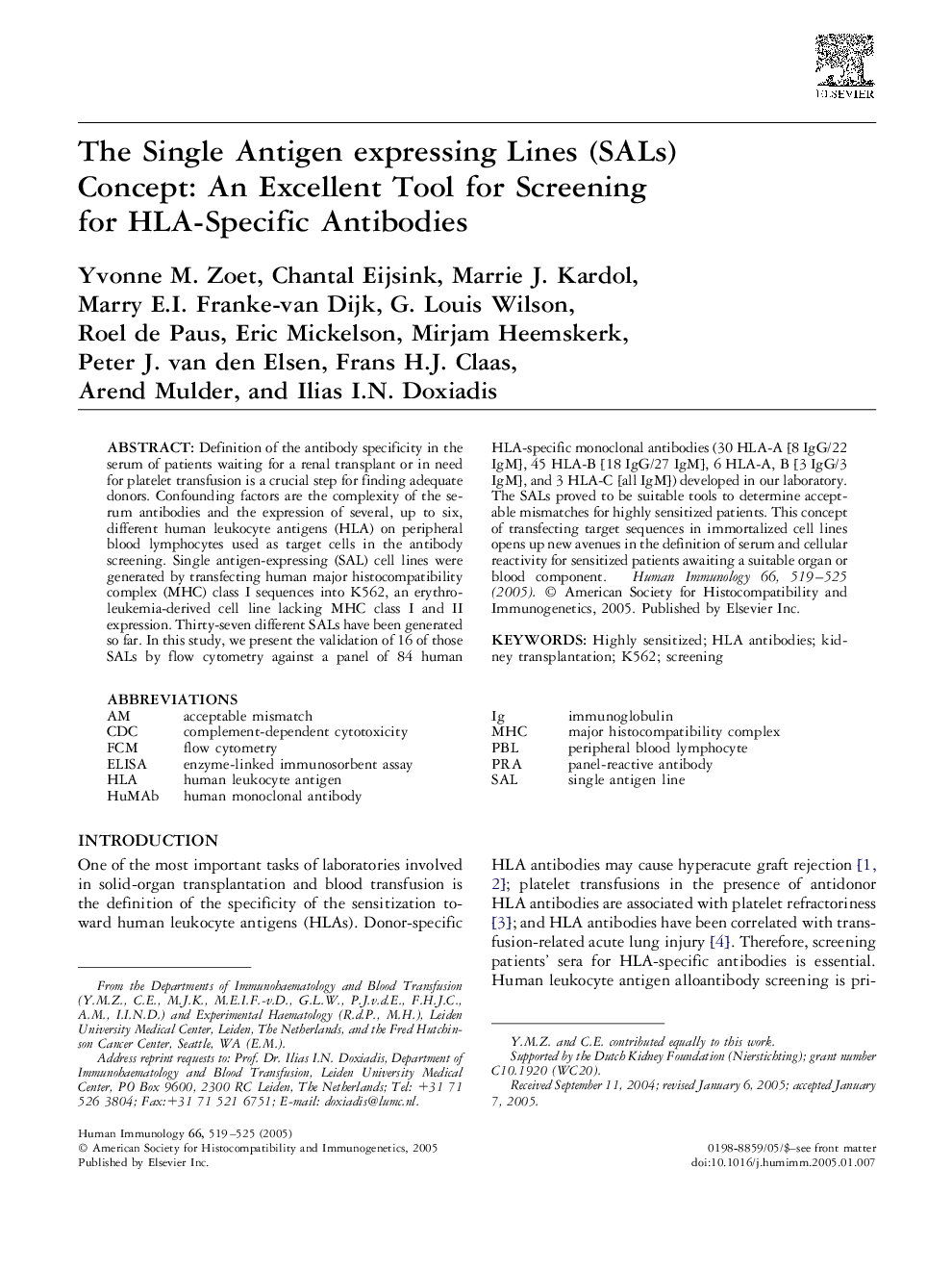| Article ID | Journal | Published Year | Pages | File Type |
|---|---|---|---|---|
| 9264193 | Human Immunology | 2005 | 7 Pages |
Abstract
Definition of the antibody specificity in the serum of patients waiting for a renal transplant or in need for platelet transfusion is a crucial step for finding adequate donors. Confounding factors are the complexity of the serum antibodies and the expression of several, up to six, different human leukocyte antigens (HLA) on peripheral blood lymphocytes used as target cells in the antibody screening. Single antigen-expressing (SAL) cell lines were generated by transfecting human major histocompatibility complex (MHC) class I sequences into K562, an erythroleukemia-derived cell line lacking MHC class I and II expression. Thirty-seven different SALs have been generated so far. In this study, we present the validation of 16 of those SALs by flow cytometry against a panel of 84 human HLA-specific monoclonal antibodies (30 HLA-A [8 IgG/22 IgM], 45 HLA-B [18 IgG/27 IgM], 6 HLA-A, B [3 IgG/3 IgM], and 3 HLA-C [all IgM]) developed in our laboratory. The SALs proved to be suitable tools to determine acceptable mismatches for highly sensitized patients. This concept of transfecting target sequences in immortalized cell lines opens up new avenues in the definition of serum and cellular reactivity for sensitized patients awaiting a suitable organ or blood component.
Keywords
FCMHuMabK562CDCPBLPRASALHLA antibodieshuman monoclonal antibodypanel-reactive antibodyHuman leukocyte antigenHLAimmunoglobulin ELISAEnzyme-linked immunosorbent assaycomplement-dependent cytotoxicityScreeningFlow cytometryperipheral blood lymphocytemajor histocompatibility complexMHCKidney transplantation
Related Topics
Life Sciences
Immunology and Microbiology
Immunology
Authors
Yvonne M. Zoet, Chantal Eijsink, Marrie J. Kardol, Marry E.I. Franke-van Dijk, G. Louis Wilson, Roel de Paus, Eric Mickelson, Mirjam Heemskerk, Peter J. van den Elsen, Frans H.J. Claas, Arend Mulder, Ilias I.N. Doxiadis,
